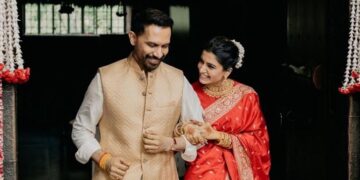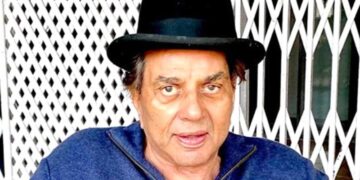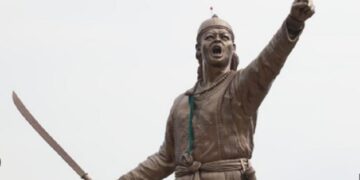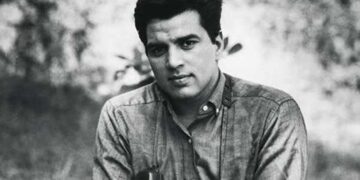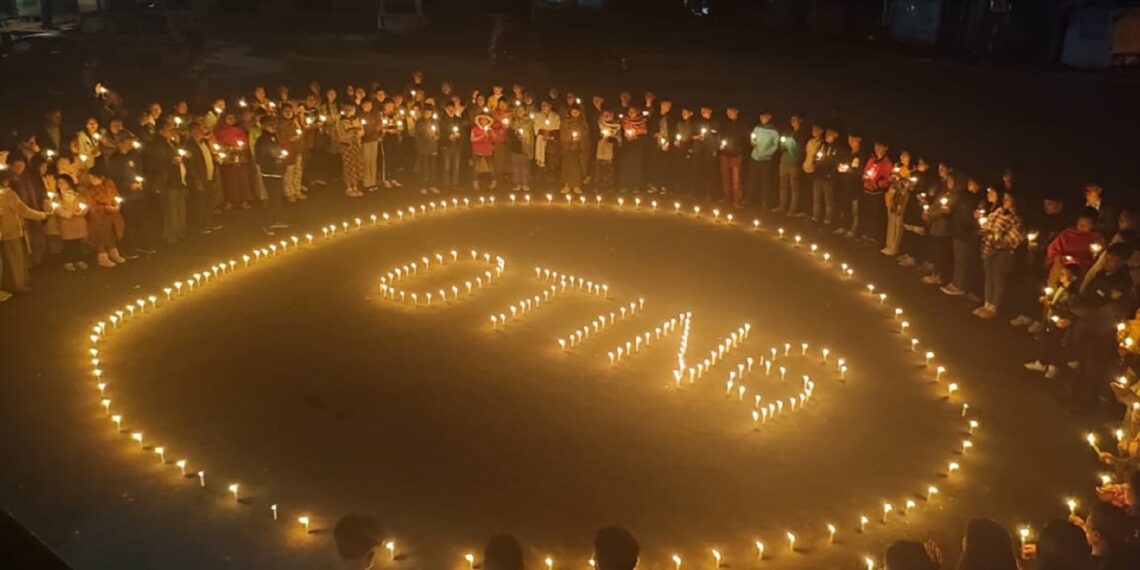Dr Alex Waterman is a Professor of Peace Studies and International Development at the University of Bradford, United Kingdom. Earlier, he worked as a Research Fellow (India/Asia) at the German Institute for Global and Area Studies (GIGA), Hamburg (2021-2023) and in the University of Leeds (2015-2021). Since 2022, he has co-edited the prestigious security journal “Civil Wars”.
Prof. Waterman’s award-winning research has been published in leading journals such as Journal of Global Security Studies, International Peacekeeping, Asian Security, Civil Wars and Small Wars & Insurgencies. He has previously held affiliations with the Modern War Institute at West Point, the International Institute of Strategic Studies (IISS), Manohar Parrikar Institute for Defence Studies and Analyses (MPIDSA) and the Tata Institute of Social Sciences (TISS).
Recently he penned a paper along with Jaideep Saikia and Prof Edward Newman of the University of Leeds, United Kingdom on “The Impact of Covid-19 on Insurgency and Rebel Governance: Lessons from India’s North East” which was published in the Journal of Global Security Studies, Volume 8, Issue 2, June 2023. The paper is a groundbreaking research and has been hailed for its full-bodied field work and original findings. Waterman’s PhD research on insurgency, counter-insurgency and peace processes in the Assam and Naga conflicts won the 2020 Global Policy North Outstanding Thesis Prize. Here is an excerpt from an interview with Jaideep Saikia.
Alex Waterman: Jaideep, you have just returned from a rather extended field visit to Nagaland and thereabouts. What are your thoughts after the visit?
Jaideep Saikia: The visit was an eye-opener even for a fairly “dedicated” student of security such as I. I mean I have been following the security related developments in Arunachal Pradesh, Assam, Manipur and Nagaland as also the India-China boundary as it pertains to the Eastern Sector for closer to three decades. I have travelled rather extensively in the region despite my indifferent health and a leg that has metallic implants embedded in it, but the situation in the recent times necessitated a re-visitation. After all, much has happened in the last couple of years.
I term my visit to be an eye-opener for a number of reasons. The first and the foremost aspect is the complete transparency with which I was permitted to witness the security situation in the places I visited. People in mainland India and perhaps even abroad are fed on stories that are somewhat removed from reality. Most “experts” write about the North East as a “fragile garrisoned land” where the Indian army and the Indian para-military forces is considered to be a somewhat of an occupation force with laws such as the Armed Forces (Special) Powers Act. But the reality is very different. I not only witnessed the extra mile that both the Indian army and the Assam Rifles have walked (and indeed are walking!) to usher in peace and development in the region is exemplary. The manner in which they go about their Internal Security Management duties has to be seen to be believed.
The Indian army is in the region temporarily, but the Assam Rifles’ presence is permanent and it has both counter-insurgency and border management as its primary brief. Officered by the Indian army, the operational command over the force rests with the Indian army. The synergy between the two is excellent and I can tell you that it is excellent teamwork that has been reaping the rich harvest in the frontiers of India.
Yes, aberrations have taken place in the past. But atonement and course correction have been swift. Indeed, I can hold my hand to my heart and say that an act of indiscretion by, say the Assam Rifles can never be a premeditated act. At best it would have been an anomaly.
AW: But is there real peace in Nagaland?
JS: It depends on what you mean by peace. The unusual situation that has arisen out of the Indo-Naga conflict has certainly contributed to a state of affairs that can be characterised as “chaotic”. Even as Nagaland has perhaps one of the highest extortion rates in the country: I am referring to the illegal taxes that are being collected by various insurgent groups and the attendant fact that it is one of the most “weaponised” state in the country, there are other indices such as the lowest crime rate against women in India which showcase that the law and order situation from a particular point of view is remarkable. Therefore, until such time there is a solution to the Indo-Naga conflict—which is the longest running insurgency in the world—one would continue to witness a sense of “perturbed peace”.
But let me tell you that the onus of ushering durable peace which would be one that would be rid of aspects such as extortion and institution of correct provision of gun laws etc rest with New Delhi. The Indian army and the Assam Rifles are in Nagaland and the region to enforce what the ceasefire provision scriveners have set down on paper. I know for a fact that were an insurgent to be caught with a weapon without the requisite “permission” he/she would be apprehended by the Assam Rifles.
AW: But why were the insurgents allowed to retain their weapons even after a ceasefire was declared?
JS: Beats me! The political leaders and the bureaucrats in New Delhi should have comprehended the way aspects would shape up if such absurd provisions have been allowed to creep into the ceasefire ground rules. It is absurd, but an insurgent is allowed to carry his/her weapon if he/she conceals it, and when he/she is marching from Camp A to Camp B. Voluntary collection of taxes are allowed. But you can be certain that the definition of voluntary is to a considerable extent dictated by the weaponry and the arsenal that groups such as the NSCN (IM) possess. I am glad that of late a “double-lock” system has been institutionalised for groups coming into newer ceasefires.
AW: Which are the places you visited in Nagaland and Manipur?
JS: Last year I visited Imphal, Churachandpur, Chandel, Moreh and Ukhrul in Manipur. But the visit that took place from 13 September 2023 to 20 September 2023 was to places such as Oting in Mon, Rangapahar, Dimapur, Khonoma and, of course, Kohima.
AW: Oting was the village where 13 civilians were killed in a botched army operation. What did you witness there?
JS: Death of a near and dear one is perhaps the saddest event in a human beings life. The 4 December 2021 incident will go down in history as one of the darkest day for India. The pain will endure for a very long time and the name of the remote village, Oting will be in the pages of every history book for ever.
But you know, Alex, when I was driving from Mon to Oting I was gripped with a queer sense of sadness and trepidation. The manner in which the populace of Nagaland had literally “boycotted” the Indian army and the Assam Rifles in the aftermath of the incident and for six long months was frightening. And, with good reasons to. But, I was surprised by the sea-change that I saw in Oting. The scars have not left, but I can tell you that the anger has disappeared.
I went from house to house of the victims and met a few who were grievously injured in the incident. I expected rage and fury. Instead, there was forgiveness. It was one of the most difficult of situations for me. 13 innocent people were gunned down just over 21 months ago, but the Assam Rifles—incidentally, a force which was not responsible for the carnage—had applied the healing touch with great fortitude and penitence to the extent that whereas there was boycott of the force six to eight months ago there is now requests for badminton courts from the Assam Rifles. I saw water tanks and play grounds and genuine effort by the “Sentinels of the East” to atone for the mistake. I must also tell you that the villagers burnt down the Assam Rifles Tactical HQs in Mon immediately after the incident. But the force showed great restrain and did not open fire on the mob.
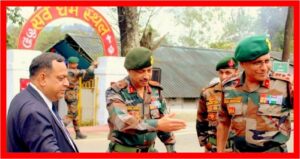
JS: The Inspector General of the Assam Rifles (North) in Kohima, Maj Gen. Vikas Lakhera, SM and the Sector Commander in Tuensang, Brig. Vikram Singh along with the rest of the team has achieved the impossible. I was even told that the back flags that used to greet the visitor to the village have now been replaced with the tri-colour. In sum, the incredible has been realised in Oting. The Indian nation must be grateful to this noble force.
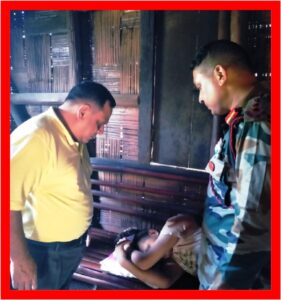
AW: I believe you delivered a lecture on the Naga Peace Process to over 200 Naga students in Kohima. What did you have to say to them? How were your views received?
JS: Alex, I recorded the speech in my mobile phone and although the recording was not very good, I will simply transcribe what I said to the 200 odd students from several colleges in Kohima. The lecture which was organised by the Assam Rifles was held in the Capt Kenguruse Hall.
The extempore lecture is provided below:
The name Capt. Kenguruse brings back memories of the Kargil war and not only the victory that we were able to achieve in the limited war, but a sense of sadness and pride. Sadness because it took away many an able youth who were in their prime from our midst, ones who made the supreme sacrifice for India, and pride because they have left behind examples for us to hail and follow.
Capt. Kenguruse is one such name. His courage and valour will continue to be remembered throughout India and Nagaland. Indeed, in some sense his supreme sacrifice also epitomises the umbilical cord that binds Nagaland and the North East to the rest of India. Capt Kenguruse is truly a Maha Vir and we in India cherish his proud name.
Ladies and gentlemen, I have been asked to share some of my thoughts about the ongoing Naga Peace Process and the way ahead. But I think I am just going to think out aloud today and ponder over a few questions instead. I am well aware that I am here to learn and not to preach.
All of you are aware that the problem we are going to discuss today happens to be the longest running problem in the world. I mean you may term it unrest, insurgency, insurrection or simply the inability in a section—and I repeat, section—of the Naga people to come to terms with their relationship with the Indian nation.
I am a proud Assamese, a proud North Easterner and an even prouder Indian. The pride stems from the fact that I proudly wear badges of each of these entities. And, because I know they are all intertwined.
Nagaland was part of Assam until 1963, but I can assure you that there is much in common between our two peoples. I mean Assam and Nagaland. Nagaland like Assam is just another exquisite leaf of the great Indian Banyan tree and nothing; absolutely nothing can take that identity away. Yes, in a family there are bound to be differences and dissonances. But these are to be resolved amicably, through dialogue, by way of “give and take”, by taking recourse to the charity principle. And, I am happy that that is precisely what is happening at this point in time.
I am aware that there has been some delay in the dialogue process and as a neutral observer I am of the opinion that a solution should be cobbled out sooner than later. A solution that is acceptable to both sides.
Much development has taken place in the last couple of decades, but Nagaland would, I am certain, become a fabled land once the minor irritants are ironed out. Indeed, I am yet to see such beautiful, loving people. And, I have travelled throughout the world for education and work.
Ladies and gentlemen, there is talk about a separate flag and a constitution when one talks about the Naga Peace Process. While I have reservations about a separate Yezhabo or a constitution, I see no problem with a flag. After all, the “Tiranga”, the “Tricolour” is and will continue to be the national flag!
Indeed, at this point, I hold my hand to my heart when I say that I have come here as a student.
You must, therefore, tell me as to how many of you are desirous of a Greater Nagalim that encompasses parts of Arunachal Pradesh, Assam and Manipur? And, how many of you are content with the present territory of Nagaland?
In the same breath, I wish to say that I hope the proponents of Greater Nagalim know about the almost impossibility of the other three states parting with their territories.
So, would you wish to carry on with a stalemate or forge ahead as a proud stakeholder and partner in India’s nation building exercise? The choice is squarely yours.
I have seen the enormity of progress that some of your Naga brethren have achieved in metropolitan cities of India. Correct me if I am wrong, but I think they are a happy lot.
To that end, emotional integration with Bharat that is India is certainly on the rails. And, it is you, the future of Nagaland and, yes, India who will complete the unfinished agenda.
Someone has written that as the “crow flies the region is closer to Hanoi than New Delhi”. That may be geographically true, but vagaries of geography do not define the boundaries of a nation’s ethos. It is the people and their dreams that determine a nation’s identity. And the time has come for Nagaland to seize that moment and be the bejewelled crown of that great destiny.
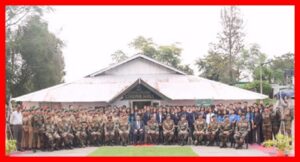
Many years ago, I read a book called the “Nagaland: The Night of the Guerrillas”. It was authored by Nirmal Nibedon who spent a lifetime in this region. The book documented the present NSCN (IM)’s general secretary, Thuingaleng Muivah’s 97 day trek to Yunnan in 1967, about the long march, Peking, Oking and Kuknalim. The book also talks about how the revered Angami Zapu Phizo rejected Chinese communism and sought Nagaland for our good lord “Jesus Christ”.
I am no scholar, no historian not even a soothsayer. But I can assure you that the Indian magnanimity is a large-hearted animal and this is one aspect that cannot be doubted. It has the capacity to encompass your linguistic, cultural and religious ideals. The Assam Rifles on whose invitation I have come here is a subset of that all-encompassing entity. Indeed, the Assam Rifles is your force as is the Indian army. To that end, the Assam Rifles epitomises that sacred bond between Nagaland and India.
I can go on and talk about what may be done for the Naga-dominated areas of the other three states, particularly Manipur. We are witnessing how fires have engulfed your neighbouring state of Manipur and the state of affairs is sad. But I hope better sense will prevail and peace will return.
As for the Nagas of Manipur, perhaps an administrative package can be worked out, an Autonomy+ for the Naga dominated areas.
But, ladies and gentlemen, my initial question still remains unanswered. How many among you are genuinely desirous of a Greater Nagalim that encompasses parts of Arunachal Pradesh, Assam and Manipur? And how many of you are content with the present territory of Nagaland, albeit with a modicum of autonomy that ushers in correct development, peace even as it recognises the unique identity of the Naga people? Tomorrow is a Sunday, Holy Sabbath Day, a day of atonement, forgiveness and soul-searching. I implore you that when you go to church tomorrow search your heart and hear it speak. I want to listen to the answer to my question when I am here the next time.

In the end, I will say that development is a factor of security. Peace, amity and co-existence are the ingredients of that development. And, for development to take place, the way ahead for you to is to grab it, embrace it, and say out loud that the future is yours.
Thank you for your patience. Jai Hind.
AW: At this time, it is quite appropriately Manipur that is hogging the headlines as also the attention of New Delhi, but has there been any headway in the Naga Peace Process?
JS: The talks between the interlocutor, A.K. Mishra and the NSCN (IM) leadership I am told have restarted. I am not privy to the details, but all I can say at this point is that there has to be compromise from both sides. The NSCN (IM) cannot expect to hold on to impossible demands such as separate constitution and integration of all Naga-dominated areas. A via-media has to be found. Personally, I find it absurd that a ceasefire has been allowed to continue for 26 years without resolution. Both sides have been rigid and mistakes were made in the past by an interlocutor who doubled up as the governor of Nagaland as well. I think that was a mistake. But the fact that New Delhi took corrective steps and removed the person in order to continue with the process of dialogue showcases the acumen and the large-heartedness of the centre.
AW: What in your opinion would happen after the exit of Thuingaleng Muivah? Who are the leaders who could succeed him?
JS: It is difficult to say. Thuingaleng Muivah is aging and I am not sure whether there is going to be a smooth succession. Indeed, you will recall the webinar which you anchored on 19 March 2022. It had the former union home secretary, G.K. Pillai, Lt Gen (Retd) K. Himalay Singh and I. You will remember my warning call that the second rung of leadership in the NSCN (IM) could be an even more confrontationalist lot. What makes anyone feel that V.S. Atem or Q. Tuccu would be less belligerent? A power struggle—which I think has already begun among the shadows—could take place with the exit of Muivah.
AW: But who is the likely successor?
JS: I think Anthony Shimray is a frontrunner.
AW: How is the NSCN (IM) responding to developments in Manipur?
JS: They are, I think, watching the unfolding situation with a keen eye. Besides, they have no love lost for the Kukis. There are unconfirmed reports that they are not only selling arms to the Meiteis, but are providing a corridor via the Somra Tracts for the Valley Based Insurgents to enter Manipur in order to perpetrate terror and lead the pogrom against the Kuki community.
AW: An Indian army soldier from the Kom community was killed recently. Is the conflict spilling over to other communities! Also is there a possibility of the ethnic conflict spilling over to the neighbouring states of Manipur?
JS: The incident is very disconcerting. The Kom community of which Mary Kom is a member was not part of the warring enterprise. I think the disturbing aspect is the fact that the agenda has now graduated from one which was purely Meitei vs. Kuki to terror actors of the state taking the battle against everything that stands for Indianess. I mean even a boycott call and a ban is being sought to be imposed on a Manipuri actress, Soma Laishram for participating in a beauty contest in New Delhi. I fear that a De-Indianisation programme could be on the cards. It is high time that New Delhi intervened and a smart course correction exercise put into action.
AW: What has been the role of the Valley Based Insurgent Groups who were billeted in Myanmar?
JS: Oh, they are the ones that are acting as the vanguard of the unrest. As member of the Coordination Committee or CORCOM, they were billeted in three neat clusters in Sagaing Division. They had even got into an agreement with the Myanmar army and were helping the latter to quell the civil strife that had broken out after the military takeover of 1 February 2021. As I have mentioned above, I am given to believe that at least 300+ insurgents belonging to UNLF, PLA (M), KYKL, KCP etc have entered Manipur with sophisticated weapons. They have aligned themselves with the anti-social elements in the state and are creating mayhem.
AW: As an observer from afar, it seems to me that the troubles in Manipur are far from over? What would be your recommendations for a structured and calibrated fire-fighting exercise?
JS: Glaring mistakes that are both political and bureaucratic in nature have been made. Even the central agencies cannot be absolved of mistakes committed. I am not certain as to why New Delhi is refusing to step in and make efforts to solve the problem. There is a possibility of a spillover to states such as Mizoram.
But I am of the opinion that a robust security apparatus that is akin to what Assam and Kashmir had by way of the Unified Command should be immediately instituted in Manipur. The Corps Commander of 3 Corps should be made the Operational Commander and all security forces including the Manipur state police, the para-military forces, the intelligence agencies etc should be made accountable to the head of the Rangapahar based 3 Corps.
AW: There have been allegations that the Indian army and the Assam Rifles are being partisan. I mean they are supporting the Kukis. It has also been said that the Indian army invited the Editors Guild of India to Manipur. What according to you is the truth?
JS: There is no truth to such allegations. I know the Indian army and the Assam Rifles from over a quarter of a century close association with them. Why would they side with the Kukis? And, as far as the Editors Guild of India’s visit to Manipur and the consequent report that has raised the heckles of the powers that be in Manipur, I do not think the Indian army had any role to play apart from wanting to point out to the nation that there is a section of the Press in Manipur which was not only playing a partisan role, but was endangering India’s national security.
Alex, Manipur is a very sensitive border state. The unrest in the “Land of Emeralds” is being felt throughout the world. It is a very important national security issue. The Indian army did not facilitate the visit of the Editors Guild of India team nor did it influence the report. If at all, it was probably questioning the lack of ethical reportage by a section of the Manipur Press.
AW: Finally, in our last conversation, I asked you about reports that you are slated to play an important role in India’s national security management sooner than later. What would be your blueprint in such a happy event?
JS: I am not sure what you mean by that. I am happy with the status of studentship. I went to Nagaland and earlier Manipur only in order to learn. I believe in physically visiting places and conferring with the stakeholders before I speak or write. Much harm is being done to our country’s national security as a result of adhocism. I have tried to—despite multiple illnesses and a right leg that often refuses to move—travel and study the ground realities before I pass a judgment.
But I will repeat what it takes to be a good national security manager of India and try and draw parallels with the situation in Manipur.
(a) He/she should have a sound comprehensions backed by ground knowledge of India’s national security imperatives. In the case of both Manipur and Kashmir this is not in evidence.
(b) Vision of a strong India with a clear blueprint that can be acted upon in real time. The Manipur scenario has showcased that there is no such vision in the cerebral hemisphere of the national security managers in New Delhi. Otherwise aspects in Manipur would not have come to such a pass. There is no perspective planning not to speak of a clear blueprint that can be activated when aspects go awry as indeed they have in Manipur.
(c) Non-partisan outlook coupled with impeccable integrity and clarity that national security is not subservient to a political ideology. Once again the Manipur experience clear showcases that national security has been sacrificed in the altar of political expedience.
(d) Ability to realise the faultlines before they become unmanageable. I am of the considered view that were the central agencies alert in the immediate aftermath of the Manipur High Court judgment or even the Solidarity March of 3 May 2023 and had sent red alerts to New Delhi that all is not well than Manipur could well have been rid of the agony that is presently experiencing. It is also possible that alerts were sent from Imphal, but were not taken seriously by the competent authorities in New Delhi. In any event, the inability to realise the faultlines is greatly in evidence.
(e) Intellectual capacity to cobble an iron-clad and consistent doctrine for India’s national security including counter terrorism. The inability to do so is extremely incomprehensible and disturbing.
(f) Not straitjacketed in a past that refuses to permit “out-of-the-box” solutions including international negotiations that would usher in peace for India. I think a beginning has been made in this direction, primarily with Myanmar, but the present necessitates an accelerated pace of action. The same is the case with the India-China boundary issue.
(g) Be a reliable team player who leads by example and commands the respect of the entire national security set-up of the country. In other words, although the national security manager is not expected to be omniscient, his/her writ pertaining to national security of India—which would be arrived at after great deliberations and discussion with peers—must not have opposing views that hurt the country’s image inside and outside India. I am afraid; the atmospherics of the present seems to be exhibiting aspects quite to the contrary. Manipur is being debated in the European Parliament and protest marches are being staged in Washington DC.
Although I do not wear the tricolour on my sleeve or set my caller tune to Sare Jahan Se Accha, I am a patriotic Indian, and I do not like either my army or my country to be vilified and denigrated in anyway, especially if it is in shores foreign.


